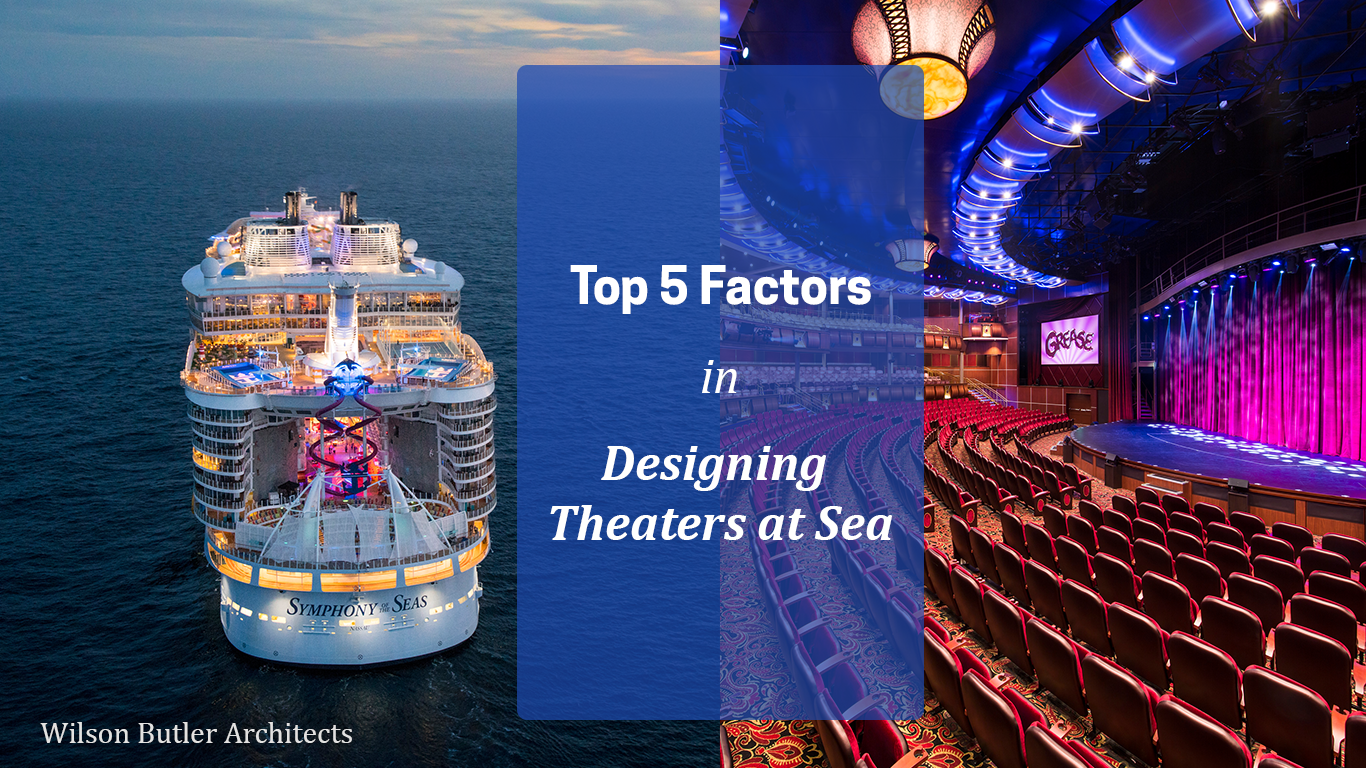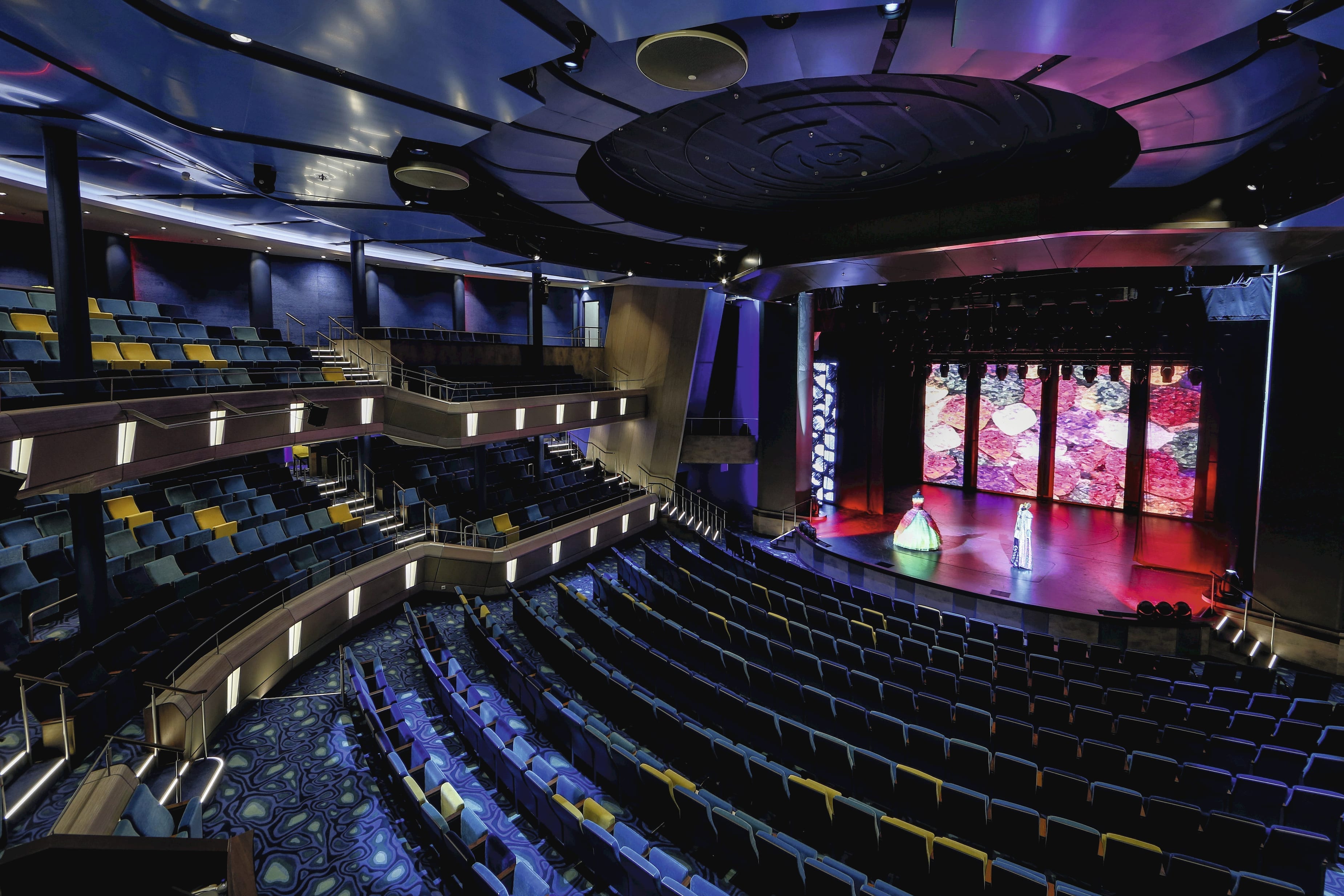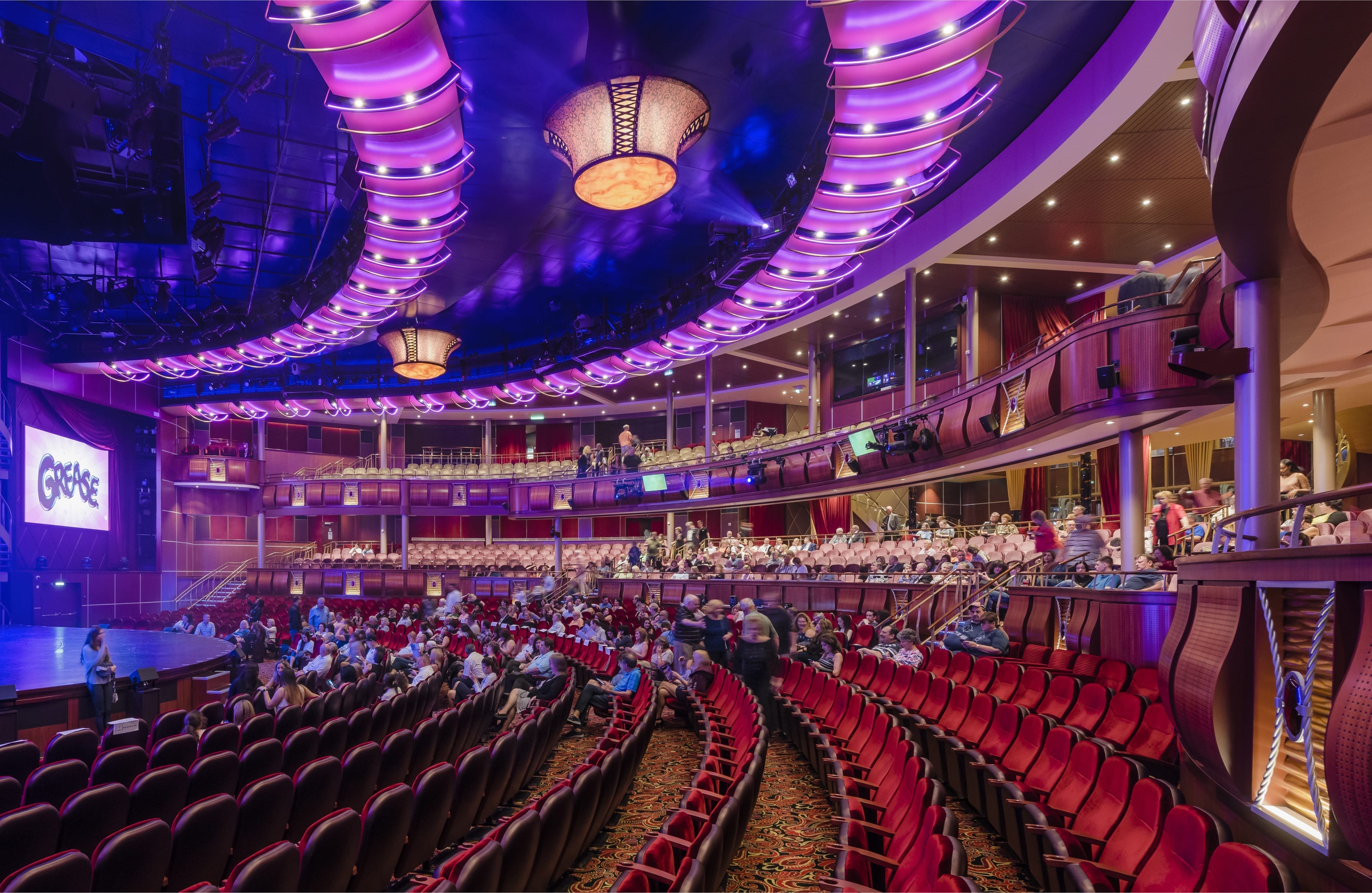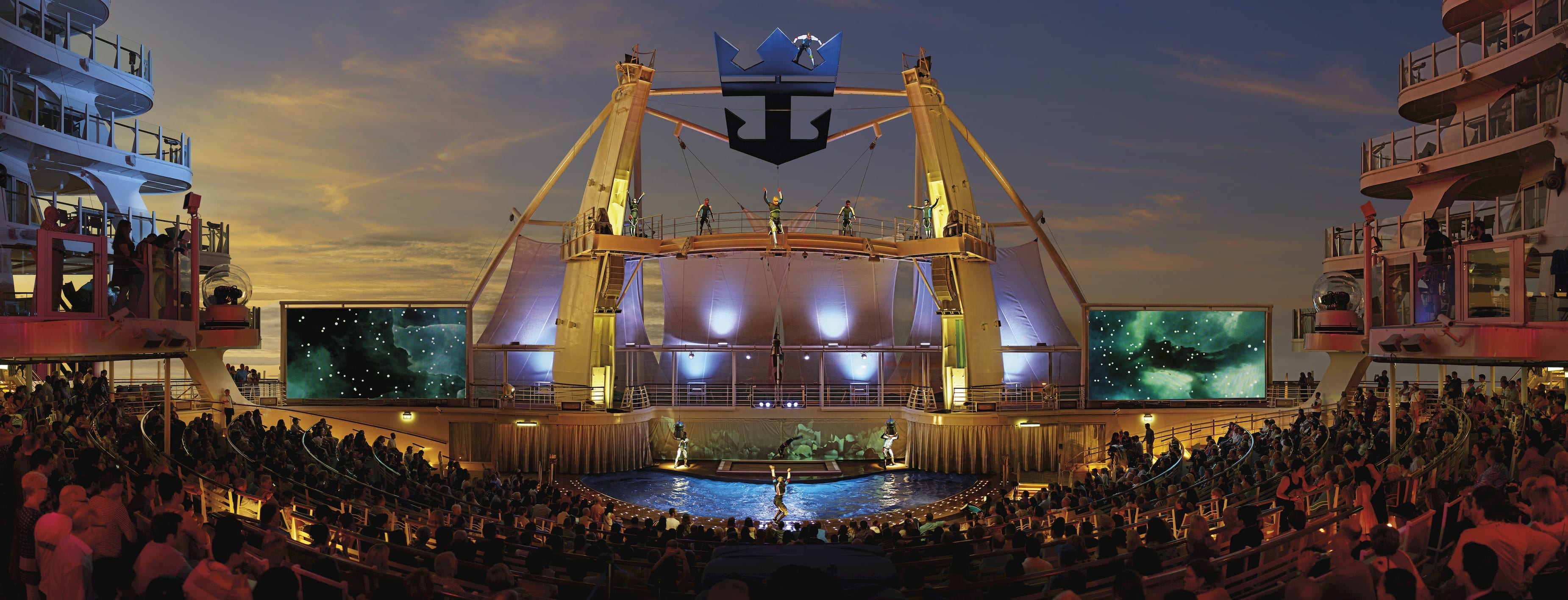
Everything must be designed in a compressed environment without sacrificing comfort. And there is always a balance to be struck between personal and public space. To maximize public space, clever design and lighting treatments are often used to increase comfort.
Cruise ship evening entertainment has come a long way since the days of lounge shows. Today, cruise lines are working with the choreographers, directors, and composers behind Broadway and elite entertainment organizations for some of the most exciting shows you’ll find on land or sea. With more extravagant shows coming to large cruise liners, architects and designers must navigate the choppy waters of designing spaces that allow artists to excite, while keeping audiences happy, comfortable, and safe.
Here at Wilson Butler Architects, we have 20+ years of experience working with Royal Caribbean and their brands, facing these challenges head-on. Some call us Theater Architects, some call us Cruise Ship Designers, but we see ourselves as creative collaborators who design with a bold spirit and adventurous mind. So, without further ado, here are five factors that impact WBA’s decision making and planning when we design theaters at sea.
Space is at a Premium
Everything must be designed in a compressed environment without sacrificing comfort. And there is always a balance to be struck between personal and public space. To maximize public space, clever design and lighting treatments are often used to increase comfort.
With space at a premium, priorities must be made. Let’s talk legroom! Guest comfort is always paramount and seats on board are designed to be just as comfortable (if not more so) than those found on land. Legroom is designed to be quite comfortable, as are the dimensions of the theater seats.
Particularly in the vertical dimension which is limited by deck-to-deck heights. The ceiling design can be used to create the illusion of vertical space (On land there is often no limit). One example of this in our work would be the TUI theater aboard the Mein Schiff 3 and 4, where the ceilings have celestial themes that feel distant and expansive.

Crew need Cabins
Performers, technical teams and stage crew all need cabins, therefore shows must run with limited personnel and limited set pieces. The good news is the ships use state of the art automated technology to compensate for the smaller crew and set materials. Recently, theaters aboard cruise ships have replaced most of the set pieces with video projections or LED screens.
For example, Celebrity Edge has sliding projection screens that open to reveal set pieces that can be built in place, so they don’t need to be broken down for different production; usually two or three per cruise. Effective and efficient!
 Constant Movement
Constant Movement
Imagine designing a venue for a constant seismic event! Aboard any Royal Caribbean ship, the auditorium and stage are continuously moving. Therefore the advanced technological equipment such as stage lifts, moving screens, aerial flying rigs and stage tracks require meticulous detailing and safety measures to ensure that they work properly on a day to day basis.
This constant movement results in more structural steel to be used, in comparison to our venues on land. To keep the balcony from vibrating, pillars are introduced to stiffen the structure, and placed so that they are not blocking any audience member’s view of the stage.
Audience safety is always a priority when designing spaces at sea. This constant movement is always on our minds when we are designing spaces that are innovative and completely safe.
Steel is a Conductor
Ships under sail can make for loud environments. The only way to isolate a space from the vibrations of machinery and the pounding of waves is to create a room that floats within a room. However, a large auditorium that seats more than a few hundred patrons cannot be carved out completely without some steel running through the space. The goal is to make the room as quiet as possible and then provide a great sound system to mask the ambient noise.
Waves and engine noise create challenges. Think about it. The entire ship is a densely populated and tightly packed city. Noise generated from the venues must be prevented from traveling too far and disturbing quiet venues such as stateroom cabins or the spa.
Considerations for sound absorbing materials are made that also make the space feel more luxurious. More plush carpeting is used at sea than found in most land theaters. Velvet walls, and some less visible design tricks also help to absorb sound and vibrations.

Cruise Ship Audiences have High Expectations
Twenty years ago a cruise ship guest might have appeared satisfied with a lounge act and a nice glass of wine. With the rapid expansion of cruising, and the competitive use of entertainment to attract guests, shows have to be original and spectacular.
Venues, such as the Studio B and the Aqua Theater on the Royal Caribbean Cruises Oasis class, Two70 on the Quantum class and most recently Eden on Celebrity Edge, provide completely original productions in a unique setting that also happen to be at sea.

Creating excellent performance spaces aboard cruise ships takes a team of collaborators who know how to face each challenge that comes up. Safety, comfort, and innovation are the name of the game at WBA. Whether we are designing to make the most of limited space, toying with new design tricks to improve a sound system, or making compromises in the name of safety, the overall goal never changes. Create a magnificent space where performers can flourish and audiences can enjoy an immersive, and unforgettable experience at sea!
